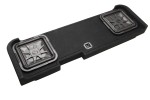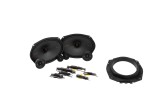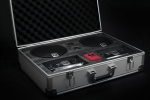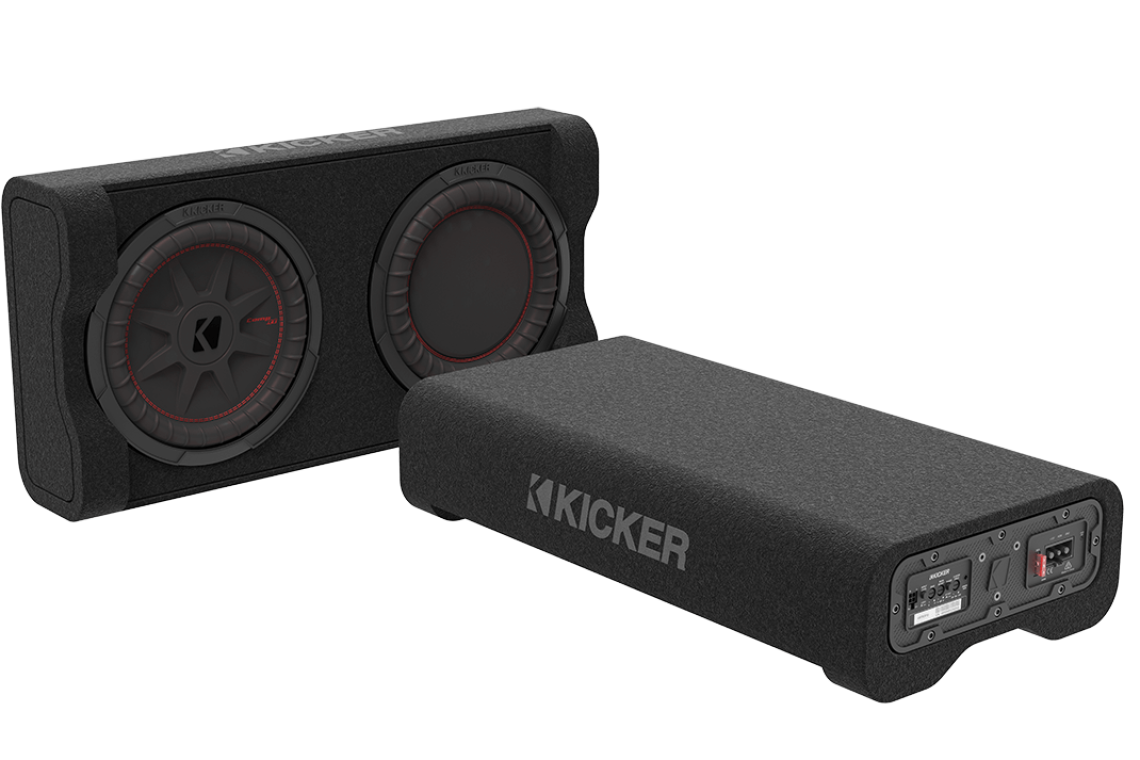You hear that bump. It’s the ubiquitous association with someone’s massive subwoofer system. That pulsing power that fills you with curiosity and, quite possibly, a bit of envy. Big sound usually means a lot of subwoofers, lots of amplification, and an enclosure that takes nearly every square millimeter of available trunk space - but does the box always have to be so bloody big? Actually, no.
Passive radiators (AKA Reflex Subwoofers) have been around since the 1930s. The use of radiators allows an enclosure to be far smaller than its ported cousins, because of the similarities in resistance to the active subwoofer accompanying it. The goal of the box size and port together create resistance. At the end of the day, that resistance is the tuning frequency of the box, which helps to determine the performance of the speaker and how much power it can take.
Think like a scale, with the box on one side and the active sub on the other. The sub wants air but the box resists, creating pressure. This battle for atmosphere happens hundreds of times per second. Want less resistance? Change the box. The sub plays deeper but it may not play louder. Want a little more punch to the bass? Tighten the box up. It won't play as deeply, but the higher frequencies and the impact will make that kick drum really kick.
“But what can I do if I don’t have tons of room in my trunk for a big enclosure?” you ask. Here’s where the reflex sub comes into play. Tuning a ported enclosure usually comes down to the port length and enclosure size. As those two sliding scales move, so does the response of the sub. Now replace that port with a different kind of resistance – a passive radiator. Change the radiator’s weight or how much it resists pressure (a stiffer suspension), and you get a similar effect as changing the port and enclosure size. The resulting resistance changes the tuning frequency, without needing additional airspace like you would with a ported enclosure. Ultimately, you get a far thinner enclosure that performs like a much larger one, without sacrificing power handling or frequency response.
One misconception is that passive radiators are strictly for subs. In fact, KICKER has been using radiators since 1980, when company Founder, Steve Irby, made his very first production full-range enclosure. A pair of 6.5-inch drivers and piezo tweeters accompanied a single 10-inch radiator in the center. The enclosure was meant to be a full-range solution installed in the back of a single-cab truck. In recent years, radiators have made a resurgence in the KICKER lineup.
“We revisited passive radiators about a decade ago,” says Aaron Surratt, KICKER’s New Product Develop-ment Manager. “We wanted to make a subwoofer that saved space, but took gobs of power and played low. The radiator helped us do that. The design trickled down to the CompRT loaded enclosure, and then to other projects.” Currently, KICKER makes a trio of subwoofer lines, built to take up minimal space under a truck seat or in a cargo area. All three are less than seven inches deep.
Surratt pointed out that without the radiator, the only way to get the enclosure to play low is to include an extremely long port, which increases the size of the overall enclosure. The radiator solves that problem. Even in high SPL applications, where extreme volume and extraordinarily deep bass are commonplace, a radiator can still take the place of a port, and lower the required size of the enclosure without sacrificing performance.
The tradeoff is cost. As of the publishing of this article, research showed the price of passive radiators ranging widely from $13 up to $235, depending on the brand, materials, and feature sets (mainly if the radiator is adjustable or not). Deeper bass often requires additional resistance, so the adjustability of the radiator allows the DIY enthusiast to play with varying weights to find the best balance of bass and efficiency.
Ultimately, deciding on a tuning solution is a matter of convenience and price. The majority of sub enclosures that feature a passive radiator are intentionally thin, made for the crowd who don’t want a big box, don’t want to build their own, and just want it to work. However, if you are more of a mind to tinker and make things sound perfect for your particular taste, grab some wood, a few subs (both active and passive), then ponder the possibilities. The results can be truly impressive.
Related Articles
 MTX Terminator Amplifiers Makes Their Triumphant Return for 2024
MTX Terminator Amplifiers Makes Their Triumphant Return for 2024
 The Importance of Keeping a Vehicle Battery Fully Charged
The Importance of Keeping a Vehicle Battery Fully Charged
 KICKER Under-Seat Loaded Enclosures for Ford, GMC, Chevy, RAM
KICKER Under-Seat Loaded Enclosures for Ford, GMC, Chevy, RAM
 KICKER Introduces Pairs of 3-Way Component Systems
KICKER Introduces Pairs of 3-Way Component Systems
 MB Quart Q Series Speakers
MB Quart Q Series Speakers





